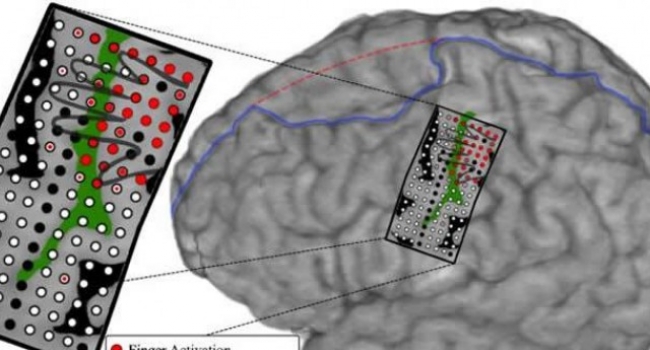- Latest news▼
-
15:11, April 24 Zombie deer disease possibly linked to hunters’ deaths

-
12:27, April 23 Appetite: Scientists found out the secret to the appeal of large portions of fast food

-
10:33, April 23 Scientists test new approach to fighting viruses

-
08:38, April 23 Ketamine may help with postpartum depression

-
22:12, April 22 Unhealthy amount of sugar found in baby food products of a well-known brand

-
19:41, April 22 Air pollution puts health of more than 1.6 billion workers globally at risk

-
17:25, April 22 Scientists found baked goods and lack of sleep to be more dangerous than alcohol

-
16:02, April 22 342 cases of measles recorded in Armenia so far in 2024

-
15:29, April 22 BrainStimulation: electrical brain stimulation alleviates anxiety and depression in the elderly

-
08:27, April 22 Cognitively stimulating jobs in midlife could lower dementia risk in old age, study finds

-
20:37, April 21 Environmental Health Perspectives: Microplastics ingested with food and water can spread from the gut to the brain

-
22:41, April 20 Scientists develop new method to safely stimulate immune cells to fight cancer

-
20:46, April 20 Blood test can determine who is at risk of developing multiple sclerosis - scientists

-
18:36, April 20 Next pandemic likely to be triggered by flu - scientists

-
12:16, April 19 Scientists grow human mini-lungs in lab

All materials
New mind-controlled prosthetic hand can move each finger individually

Researchers from Johns Hopkins University have developed a new brain-machine interface (BMI) that enables patients to move the individual fingers of a prosthetic hand using their brain signals. Reporting their progress in the Journal of Neural Engineering, the team describe how their test subject was able to operate the device with no previous training.
Though recent years have seen a number of major advancements in the field of prosthetics, the results reported in this new study represent a significant improvement on existing technologies. For instance, many of the latest BMIs allow users to master a number of different grip types when operating a mechanical hand, although these typically involve moving all fingers together as part of a single action. The ability to operate each finger independently of the rest, however, had until now never been achieved.
To accomplish the feat, researchers recruited a 20-year-old epilepsy patient who had undergone a procedure to implant a number of electrodes onto his sensorimotor cortex – the part of the brain responsible for planning and executing voluntary movements. Although the participant received these implants primarily with the intention of helping doctors to pinpoint the source of his seizures, he also agreed to allow scientists to use them to map his brain activity while moving each one of his fingers.
This information was obtained by asking the subject to move his fingers one by one, while researchers monitored the electrical impulses generated in his brain. Following this, the participant put on a special vibrating glove which stimulated the tips of each finger, generating a further set of readable brain signals.
Analyzing this data, the study authors were able to map the electrophysiological activity associated with the movement of each finger, the majority of which occurred in brain regions called the precentral and postcentral gyrus.
Using this information, they then programmed the prosthetic hand to move the appropriate finger when certain patterns of brain activity were detected. When the signals obtained from the patient’s electrode implants were connected to the mechanical hand, he was asked to concentrate on moving each of his fingers, and in doing so, caused the corresponding finger on the prosthetic device to move – with a success rate of 77 percent.
Comparing this achievement to that of previous prosthetic devices, the study authors note that “the control of five individual fingers in this study marks the greatest number of distinct degrees of freedom controlled online with ECoG [electrocorticography] signals.”
Since the procedure has only been tested on a single participant, much more work is needed before this technology is made widely available, although researchers are hopeful that their study can lay the groundwork for the development of new prosthetics that could dramatically improve the quality of life of amputees and paralyzed individuals.
Follow NEWS.am Medicine on Facebook and Twitter
- Video
- Event calendar
- Archive
- Most read
month
week
day
- JAMA Oncology: Urine test can help rule out high-grade prostate cancer with almost 100% accuracy, study shows 1210
- Daily Mail: Elderly woman in China gets infected with brain-eating amoeba 1166
- The Conversation: childhood trauma can cause pathological hoarding 1149
- Obesity: exercising before breakfast helps you lose weight faster 1149
- Daily Mail: Satiating food reduces cravings for sweets, nutritionist says 1123
- Scientists grow human mini-lungs in lab 1114
- First Armenian-German Conference entitled “Heart Failure Spring School” 1063
- Next pandemic likely to be triggered by flu - scientists 701
- Scientists found baked goods and lack of sleep to be more dangerous than alcohol 631
- 342 cases of measles recorded in Armenia so far in 2024 592
- Blood test can determine who is at risk of developing multiple sclerosis - scientists 582
- Scientists develop new method to safely stimulate immune cells to fight cancer 575
- Cognitively stimulating jobs in midlife could lower dementia risk in old age, study finds 559
- BrainStimulation: electrical brain stimulation alleviates anxiety and depression in the elderly 515
- Air pollution puts health of more than 1.6 billion workers globally at risk 349
- Find us on Facebook
- Poll





